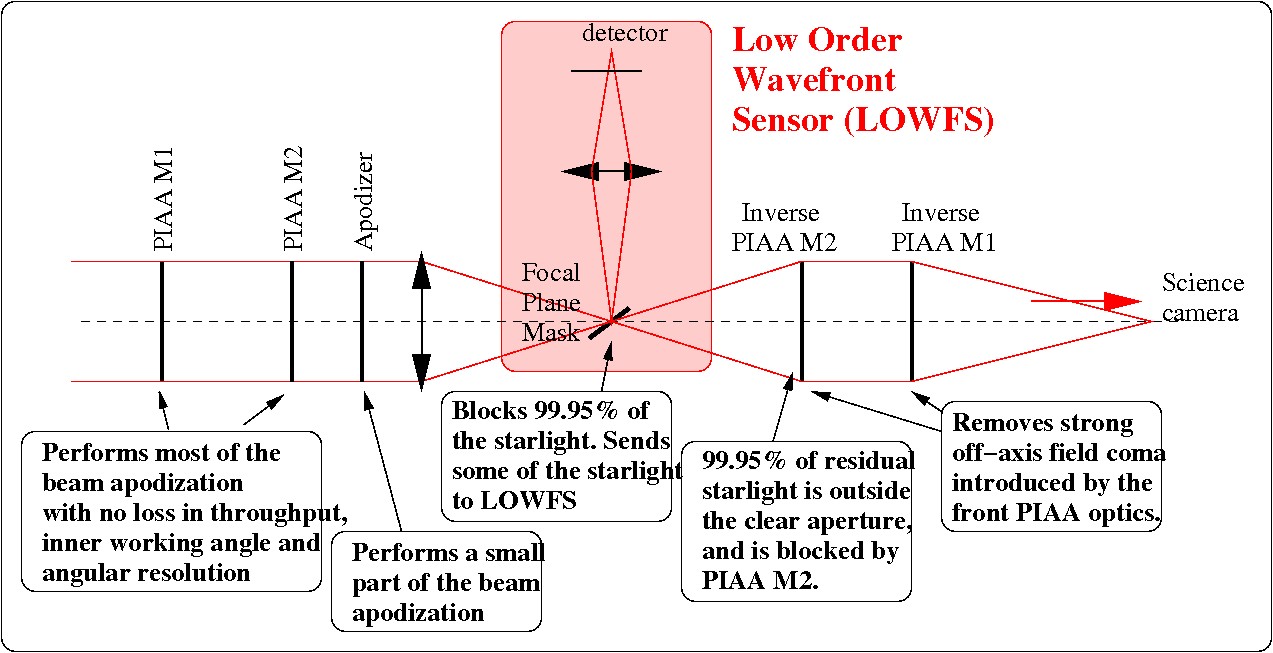
 |
Conceptual EXCEDE coronagraph architecture. Starlight rejection is achieved by a combination of lossless apodization, focal plane masking and pupil plane masking (Lyot stop). The inverse PIAA is required to maintain good image quality over the full field. The low-order wavefront sensor accurately measure pointing errors and a few low order aberrations. |
| Allowable error for 1e-6 raw contrast | Requirement for calibration to 1e-7 contrast | Sensing during observation | control | |
| Pointing | +/- 0.01 l/D (2 mas @ 400 nm) | +/- 0.005 l/D (1 mas @ 400 nm) | LOWFS (70 Hz for m = 10) | FSM + Spacecraft pointing |
| Focus | 0.003 rad (0.2 nm @ 400 nm) | 0.0015 rad (0.1 nm @ 400 nm) | LOWFS (0.8 Hz for m = 10) | M2 despace |
| Astigmatism | 0.003 rad (0.2 nm @ 400 nm) | 0.001 rad (0.07 nm @ 400 nm) | LOWFS | None |
| Mid spatial frequencies | 0.0014 rad per mode (0.1 nm per mode) | 0.00045 rad per mode (0.03 nm per mode) | DM diversity | DM |
| High spatial frequencies | ?? | ?? | None | None |
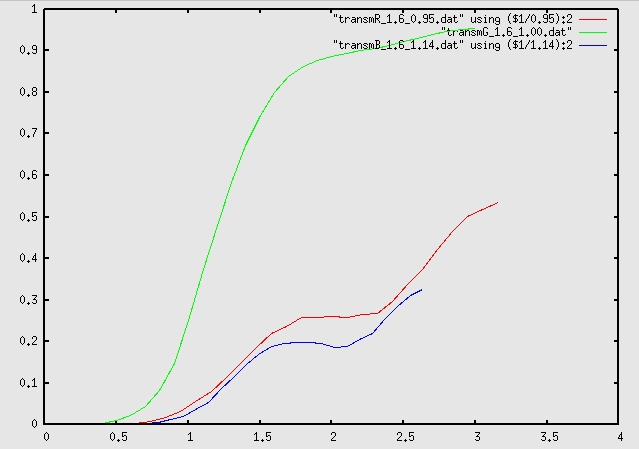
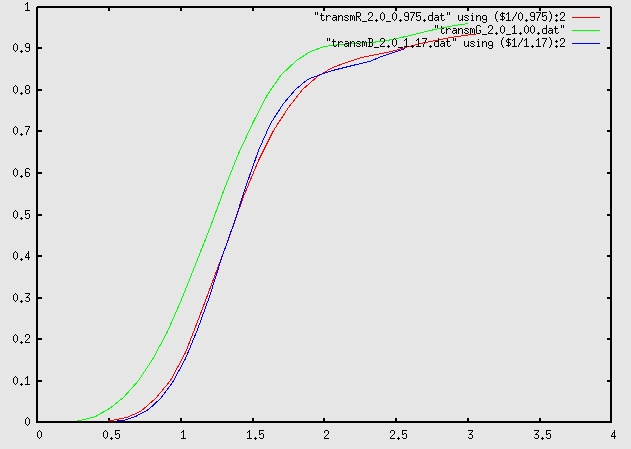
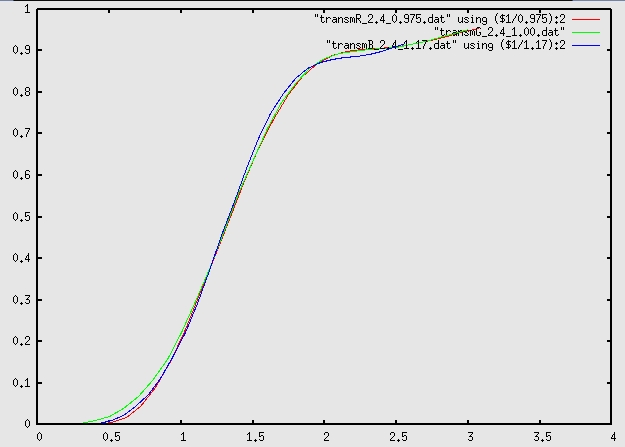
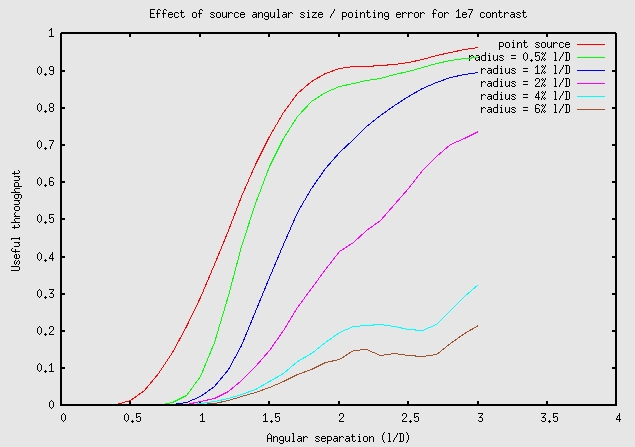
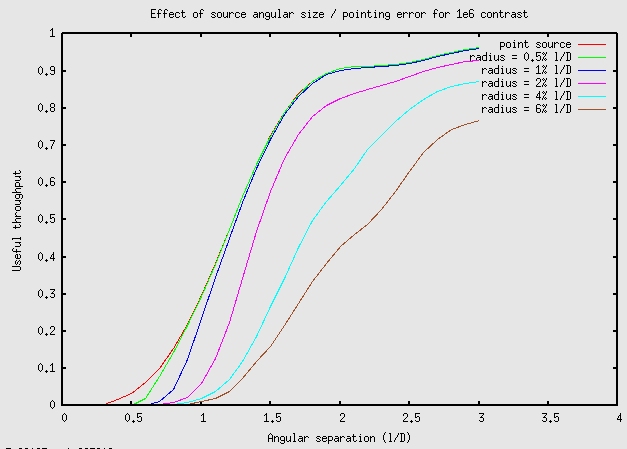
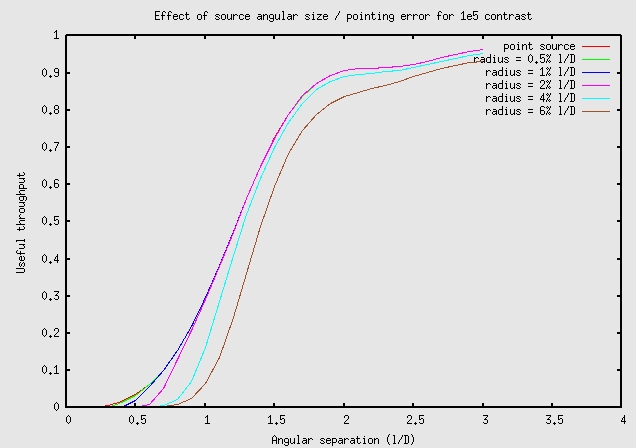
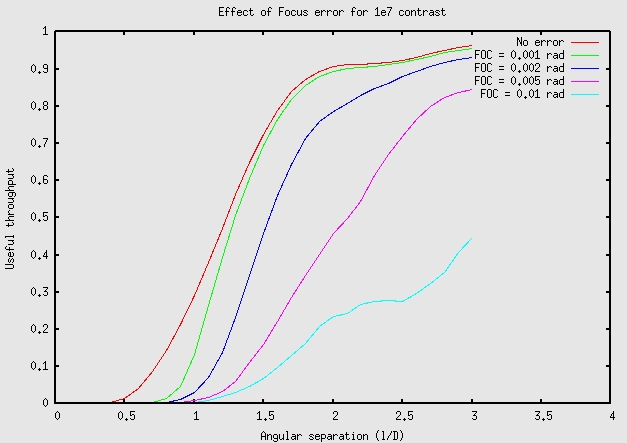
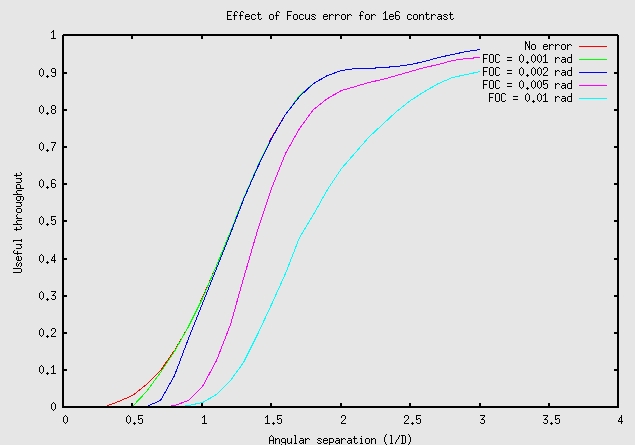
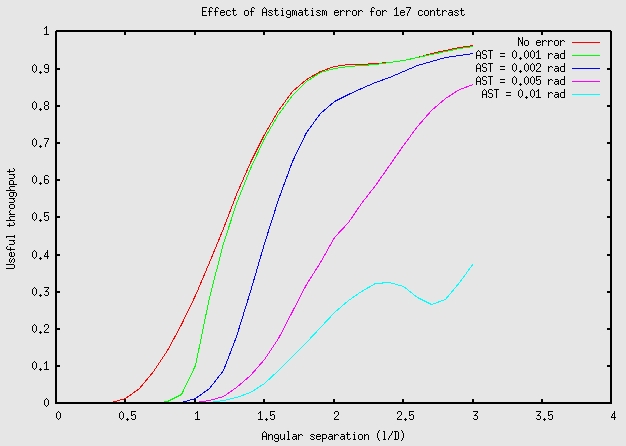

a1b = -2.758451; b1b = 2.003837; a2b = -0.996055; b2b = 5.910419; f(x) = exp(-2.758451*x**2.003837 + -0.996055*x**5.910419)
apo profile is in the form f(r) = exp( a1*pow(r,b1) + a2*pow(r,b2)) a1b = -3.903868; b1b = 2.097357; a2b = -1.096446; b2b = 7.216046;Overall throughput of profile (for non-PIAA apodization) would be 13.62%